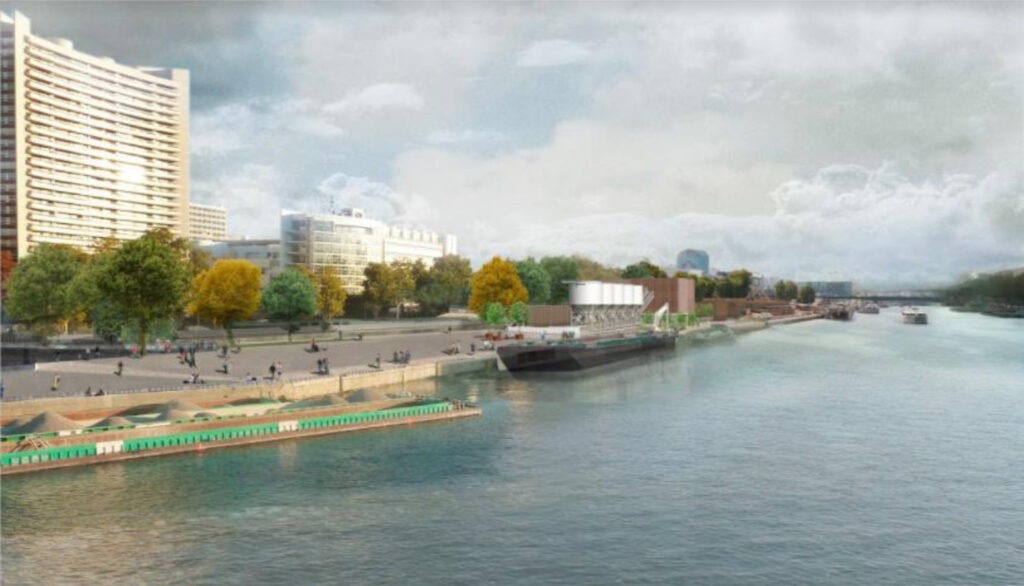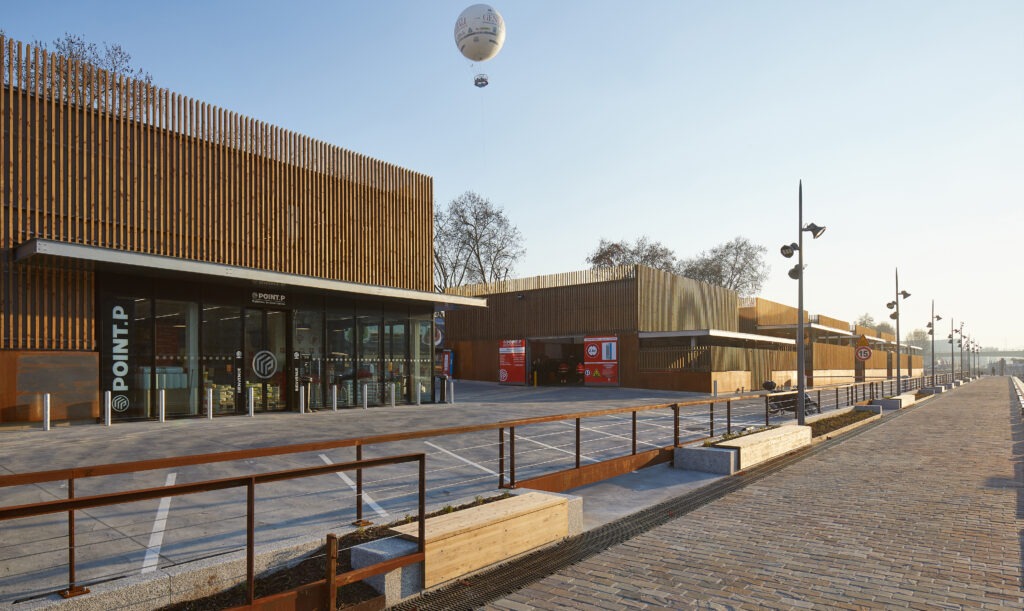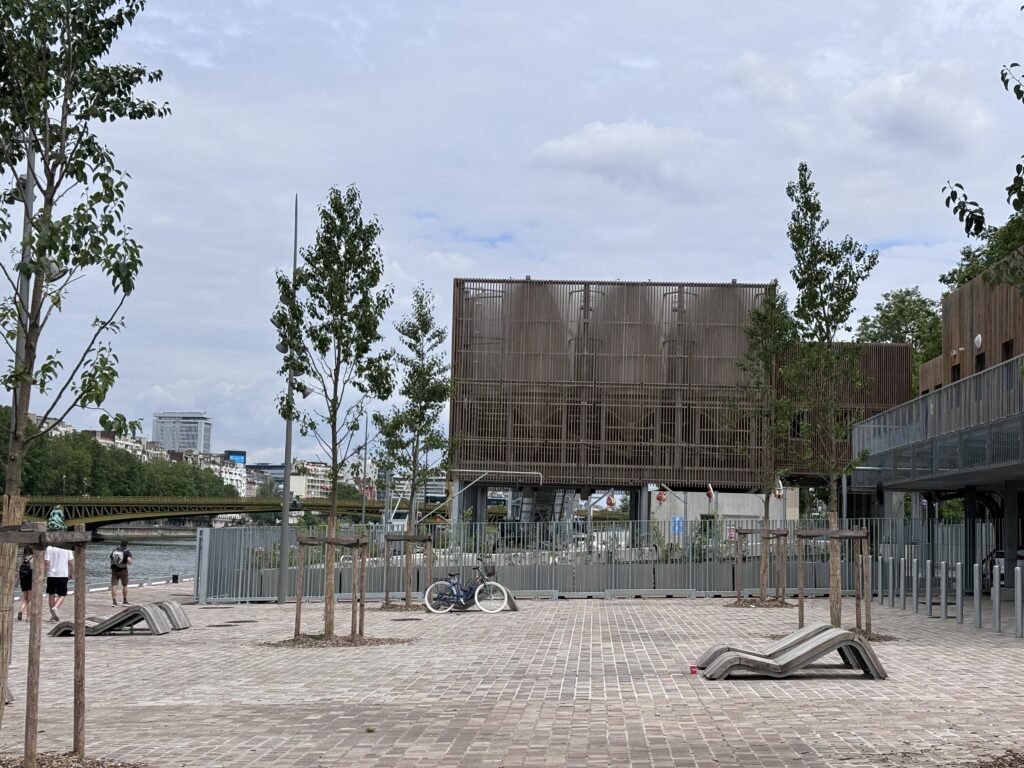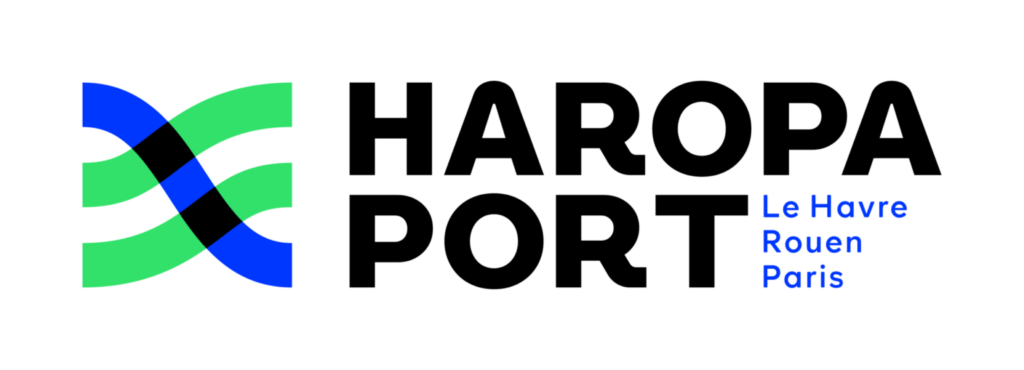Project 2024 Edition

Redevelopment of Javel Bas Port
A project supported by: HAROPA PORT | Paris
Completion date: 2024

To sum up
The Port de Javel Bas is an urban river port located in the densely populated area of Paris. Its redevelopment project aimed to enable shared use of the quays along the Seine. The objective was to preserve and strengthen the economic and industrial activity specific to the port while offering the general public a place to live and stroll.
Before the port was redeveloped, three companies shared the use of the quay: Raboni, Point P, an operator of logistics depots for building materials, and Lafarge, a specialist in producing ready-mix concrete. The central part of the quay was dedicated to industrial activities, covering an area of 9,590 m².
As part of the redevelopment project, a call for tenders was launched in consultation with the local authorities to reduce the number of operators to two, thereby freeing up 2,400 m² to create new public spaces in response to inhabitant expectations.
The originality of the project is related to its two levels of governance: a public one for the outdoor facilities and a private one for the economic areas, pursuing at the same time, a common objective of multi-stakeholder consultation. Initially, this consultation took a regulatory form, focusing on the uses and functions of the quay. A second phase was then launched, including a more in-depth consultation to define the best compromises for balancing the public use of the spaces and the commercial activities of the companies on the site. These discussions led to a shared use vision of the quays, guaranteeing the continuation of logistics and industrial activities, the continuity of pedestrian traffic along the banks of the Seine, and the creation of new public and leisure spaces. Lastly, a new Charter of Use has been drawn up to provide a framework for these developments. As a reference document, it has made it possible to perpetuate the governance model put in place to develop the project. Among other things, it provides for a Charter Council to meet at least once every calendar quarter.


Positioning of the project in relation to the Agenda 2030’s goals*
*According to HAROPA PORT | Paris
| Directly related | Indirectly related | Not related | |
| Goal 1: Climate change adaptation | x | ||
| Goal 2: Energy transition & circular economy | x | ||
| Goal 3: Sustainable mobility | x | ||
| Goal 4: Renewed governance | x | ||
| Goal 5: Investing in human | x | ||
| Goal 6: Port Culture & Identity | x | ||
| Goal 7: Quality food for all | x | ||
| Goal 8: Port city interface | x | ||
| Goal 9: Health & life quality | x | ||
| Goal 10: Protecting biodiversity | x |
Learn more about the AIVP commitment: Commitment – AIVP
Outstanding features:
- A project that guarantees a mix of uses between port, industrial, and recreational activities;
- An innovative governance model that involves companies using the Port facilities and the public authorities. The introduction of a public consultation process and a User Charter will encourage dialogue between the city and the port, by involving the local population and users of the Quai Javel in the discussions on the project and the resulting decisions;
- The project promotes sustainable transport modes by encouraging river transport of goods and giving priority to low-carbon forms of transport such as walking and cycling;
- The development of a pedestrian and cycle path along the river links the public spaces into a continuous whole. At the same time, the creation of a leisure and recreation area along the Seine makes the port of Javel-Bas an attractive place for residents and visitors alike, helping to improve the quality of urban life and strengthen the links between the city and its port.
Images of the project





About HAROPA PORT

HAROPA PORT, the major Seine Axis river and sea port, is the result of a merger of the ports of Le Havre, Rouen and Paris. Ranking 4th among Northern European ports, HAROPA PORT is connected to every continent and serves a vast hinterland centred on the Seine Valley and the Paris area.
From Le Havre to Rouen, the port complex can point to a total of over 16,000 hectares of land and 12 million sq. m. of warehousing space. Its annual maritime and river activity stands at 106 million tonnes, generating €7.3bn in value-added along with approximately 160,000 jobs.
Find out more about the project:
Back to projects